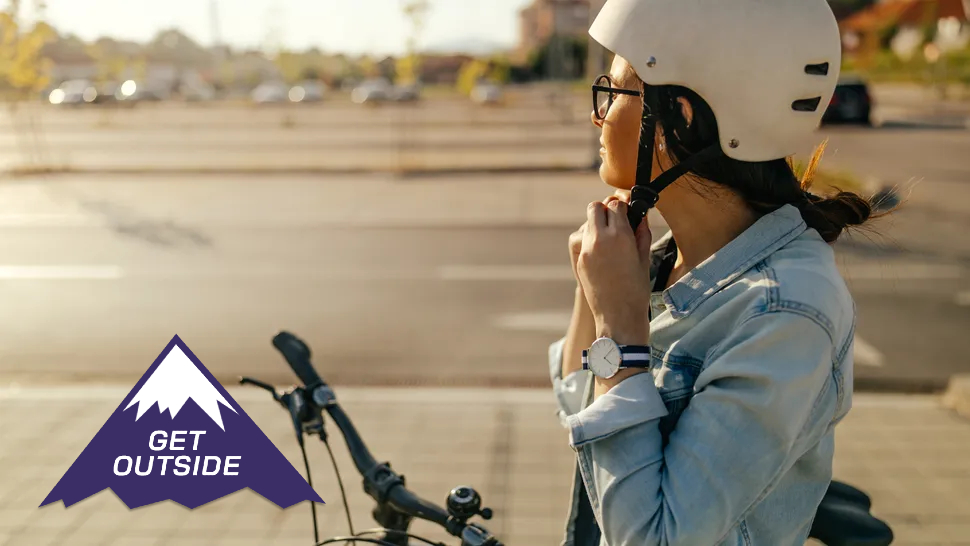6 things to consider when buying a bike helmet

If you’re planning to start cycling more, you need one of the best bike helmets, it’s as simple as that. The extra protection you get from a helmet can make all the difference in a crash, and some helmets can now even help to prevent collisions.
To get the inside track on everything you need to know about bike helmets, we spoke to Juan Garcia Mansilla, co-founder of UNIT 1, a company that makes smart bike helmets and other cycling accessories.
Here’s what you need to consider when buying your bike helmet.
Cost
Price is an obvious place to start, because you might well have a budget available to spend on your bike helmet.
“Prices vary a lot,” says Mansilla. “You’ll find basic helmets starting around $30. More advanced options — those with better materials, more features, or higher safety certifications — can go up to $300 or more.
“In our case, smart helmets with integrated lighting, MIPS [Multi-directional Impact Protection System], crash alerts and other features usually fall in the $150–$230 range.”
Safety standards
Bike helmets have to hit certain safety standards depending on where you live, and this is the first thing you should check with any helmet you’re considering, especially if you’re looking at cheaper helmets.
Get instant access to breaking news, the hottest reviews, great deals and helpful tips.
“In the U.S., the standard is CPSC,” says Mansilla. “In Europe, it's EN-1078. Both were developed for traditional cycling speeds up to around 15.5 mph/25 km/h.
“For higher-impact protection, there’s NTA-8776, a newer and more demanding certification created in the Netherlands, specifically with e-bikes and faster urban riding in mind.
“It tests for impacts up to 28 mph/ 45 km/h. No matter how fast you actually ride, a helmet that’s NTA-certified offers a higher safety margin, full stop.
“For additional assurance, some riders also look to independent testing like the Virginia Tech Helmet Ratings, which assess real-world impact scenarios.”
Comfort and fit
Once you’ve found a helmet that fits your budget and the required safety standard, you need to make sure it’s comfortable and fits well — if the helmet is loose, it will reduce how effective it is during impacts.
If you ride in hot countries, it’s also worth making sure that the helmet has good airflow so it doesn’t get uncomfortably sweaty during longer rides.
The type of cycling you do
Helmets will work for all kinds of cycling, but there are different features you should prioritize depending on whether you’re likely to be riding on the road or trails.
“Road cyclists typically look for something lightweight with maximum ventilation,” says Mansilla. “Mountain bikers need more head coverage and durability. Urban helmets tend to be cleaner in design, with moderate airflow and visibility-focused features.
Technically, any helmet can work across contexts, but one that’s built for your type of riding will always perform better.”
Smart features
Bike helmets are getting smarter all the time, and if you have a bigger budget, you can get features that enhance your safety and ride experience.
“Our [UNIT 1’s] helmets, for example, include integrated front and rear lights, turn signals, brake lights, a magnetic buckle for ease of use and crash alerts that send your location to an emergency contact if you fall,” says Mansilla.
“These tools are designed to help you avoid collisions and get help faster if one happens.”
How often do you need to replace bike helmets?
This is something to consider after you’ve bought your helmet — when should you think about buying another one?
“After any crash, the helmet should be replaced, even if it looks fine,” says Mansilla. “Impact can compromise the inner structure in ways you can’t see.
“Without a crash, most helmets need to be replaced every three to four years, depending on use. UV exposure, rain, sweat and general wear all break down the materials over time.”
More from Tom's Guide:
- The best bike helmets in 2025: expert tested and rated
- Recumbent vs. upright exercise bikes: which indoor bike is right for you?
- I tried Trek's CarBack Bike Radar — it's like having eyes in the back of my head

Nick Harris-Fry is an experienced health and fitness journalist, writing professionally since 2012. He spent nine years working on the Coach magazine and website before moving to the fitness team at Tom’s Guide in 2024. Nick is a keen runner and also the founder of YouTube channel The Run Testers, which specialises in reviewing running shoes, watches, headphones and other gear.
Nick ran his first marathon in 2016 and became obsessed with the sport. He now has PBs of 2hr 25min for the marathon and 15min 30sec for 5K. Nick is also a qualified Run Leader in the UK.
Nick is an established expert in the fitness area and along with writing for many publications, including Live Science, Expert Reviews, Wareable, Coach and Get Sweat Go, he has been quoted on The Guardian and The Independent.
You must confirm your public display name before commenting
Please logout and then login again, you will then be prompted to enter your display name.
